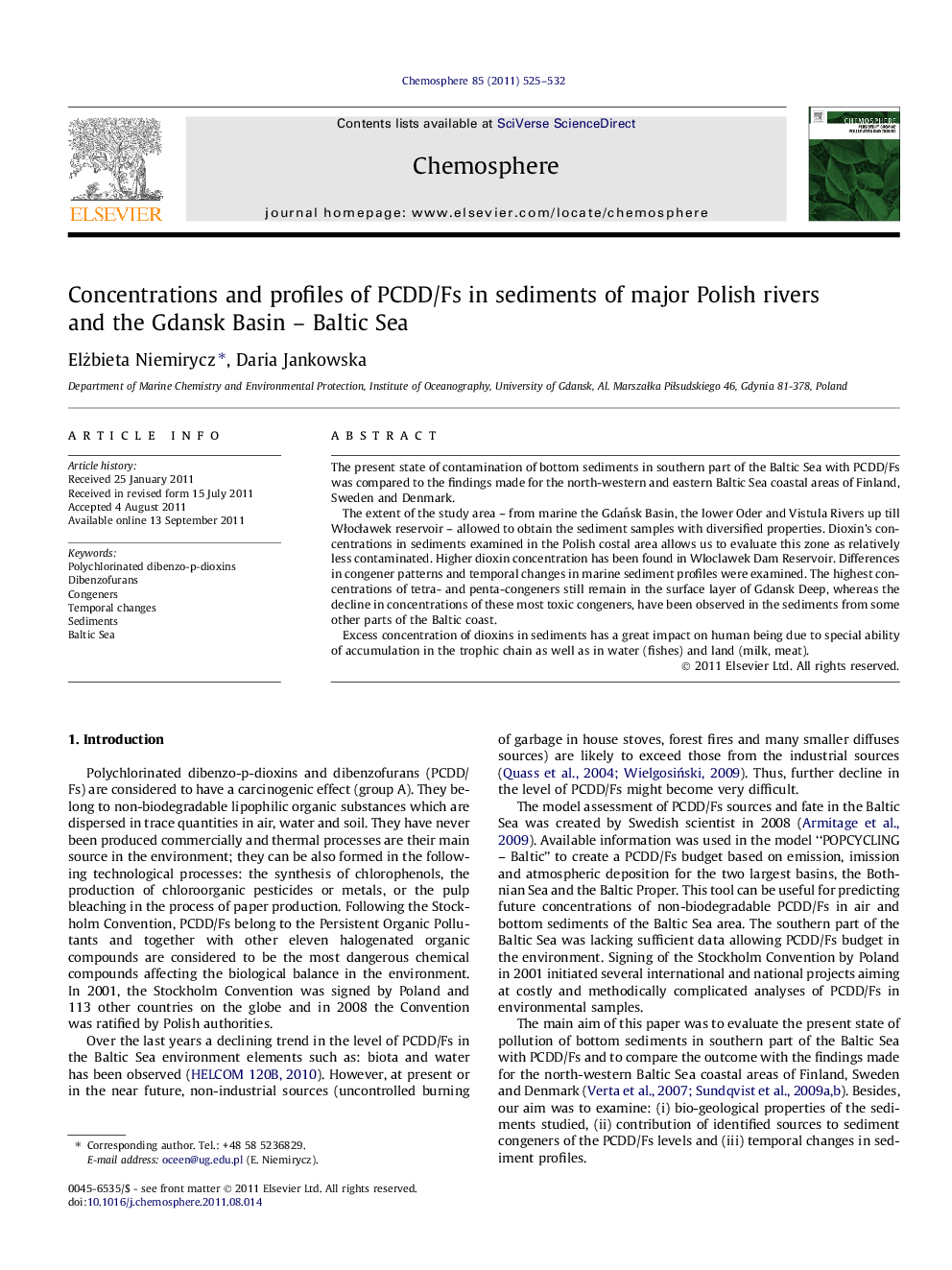| Article ID | Journal | Published Year | Pages | File Type |
|---|---|---|---|---|
| 6311639 | Chemosphere | 2011 | 8 Pages |
The present state of contamination of bottom sediments in southern part of the Baltic Sea with PCDD/Fs was compared to the findings made for the north-western and eastern Baltic Sea coastal areas of Finland, Sweden and Denmark.The extent of the study area - from marine the GdaÅsk Basin, the lower Oder and Vistula Rivers up till WÅocÅawek reservoir - allowed to obtain the sediment samples with diversified properties. Dioxin's concentrations in sediments examined in the Polish costal area allows us to evaluate this zone as relatively less contaminated. Higher dioxin concentration has been found in Wloclawek Dam Reservoir. Differences in congener patterns and temporal changes in marine sediment profiles were examined. The highest concentrations of tetra- and penta-congeners still remain in the surface layer of Gdansk Deep, whereas the decline in concentrations of these most toxic congeners, have been observed in the sediments from some other parts of the Baltic coast.Excess concentration of dioxins in sediments has a great impact on human being due to special ability of accumulation in the trophic chain as well as in water (fishes) and land (milk, meat).
⺠First results of PCDD/Fs levels in sediments of Southern Baltic (Poland). ⺠PCDD/Fs congeners informs about their anthropogenic sources. ⺠Organisms from the Gdansk Basin can be less contaminated by PCDD/Fs. ⺠Non-industrial sources are likely to exceed the industrial sources in near future.
